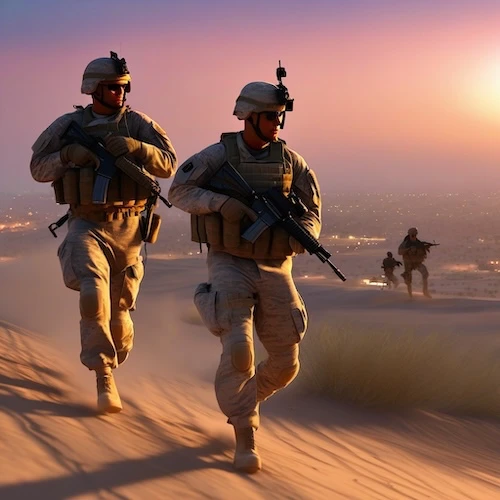Military Confinement and Military Prisons – What Service Members and Families Need to Know (2026 Guide)
The short answer is that military confinement is very different from civilian jail or prison, but it is still real incarceration with severe legal, personal, and long-term consequences. Service members sentenced to confinement face loss of liberty, separation from family, stigma, and collateral effects that can follow them for life. Understanding how military confinement works, where service members are sent, how long they may remain confined, and what legal options exist before, during, and after confinement is critical. This is exactly why Gonzalez & Waddington handles military confinement issues as part of comprehensive court-martial and post-trial defense, because early strategy can reduce confinement exposure, influence placement, and preserve future relief options.
Answer First: Can Service Members Go to Prison Under the UCMJ?
Yes. Service members convicted at court-martial can be sentenced to confinement in military brigs or, in some cases, transferred to civilian correctional facilities. Confinement is imposed as part of a court-martial sentence and can range from days to decades depending on the offense. Gonzalez & Waddington approaches confinement issues proactively, working to prevent unnecessary confinement where possible, reduce sentence length, and protect clients from harsher conditions than required by law.
What Is Military Confinement?
Military confinement is incarceration imposed under the Uniform Code of Military Justice following court-martial. It is governed by military regulations and differs from civilian incarceration in administration, oversight, and available programs, but it is still a loss of freedom with serious consequences. Confinement can be imposed pretrial in limited circumstances or as part of a final sentence after conviction. Gonzalez & Waddington addresses confinement risk at every stage of a case, from pretrial strategy through sentencing and post-trial advocacy.
Pretrial Confinement vs Post-Trial Confinement
Understanding the difference between pretrial and post-trial confinement matters because the legal standards and defense strategies are different. Pretrial confinement is not punishment and is supposed to be used only when strict criteria are met, while post-trial confinement is punishment imposed after conviction. Gonzalez & Waddington aggressively challenges unlawful or unnecessary pretrial confinement and uses sentencing advocacy to minimize or avoid post-trial confinement when possible.
Pretrial Confinement
- Used only when lesser forms of restraint are inadequate.
- Requires findings related to flight risk or future misconduct.
- Subject to legal review and challenge.
- Can significantly impact plea negotiations and trial posture.
Post-Trial Confinement
- Imposed as part of a court-martial sentence.
- Length depends on offense, evidence, and sentencing advocacy.
- May be served in military or civilian facilities.
- Triggers long-term collateral consequences.
Our firm treats confinement as a central issue, not an afterthought, because early decisions shape where and how long a client may be confined.
Where Are Service Members Confined?
Service members sentenced to confinement are typically held in military brigs, but some are transferred to civilian prisons depending on sentence length, facility availability, and service regulations. Placement decisions can affect safety, access to programs, family contact, and post-confinement outcomes. Gonzalez & Waddington considers confinement location as part of sentencing and post-trial strategy.
- Shorter sentences are often served in regional military brigs.
- Longer sentences may result in transfer to federal or state facilities.
- Conditions vary widely between facilities.
- Classification decisions can impact housing and security level.
Common Military Confinement Facilities
While facilities change over time, military confinement has historically included service-run brigs and coordination with federal correctional institutions. Understanding the system helps families prepare and allows defense counsel to advocate effectively for appropriate placement.
How Sentencing Decisions Affect Confinement
Confinement is not automatic in every case and the length imposed depends heavily on sentencing advocacy. Judges and panels consider offense severity, aggravating factors, mitigation, rehabilitation potential, and character evidence. Gonzalez & Waddington focuses extensively on sentencing strategy, presenting evidence that humanizes the accused and reduces confinement exposure wherever possible.
Collateral Consequences of Military Confinement
Confinement affects far more than time served. It impacts pay, rank, benefits, family stability, mental health, and future employment. These consequences make it essential to plan beyond the courtroom. Gonzalez & Waddington integrates post-trial and post-confinement considerations into defense strategy from the beginning.
- Automatic forfeitures and pay issues.
- Reduction in rank.
- Discharge characterization implications.
- Sex offender registration in qualifying cases.
- Impact on VA benefits and future discharge upgrades.
Can Military Confinement Be Reduced or Avoided?
In many cases, yes. Effective defense can prevent confinement entirely or significantly reduce the sentence. Options include challenging pretrial confinement, negotiating favorable plea terms, presenting compelling sentencing mitigation, and pursuing post-trial relief. Gonzalez & Waddington’s experience in serious military cases allows us to identify realistic opportunities to limit confinement exposure.
Life After Military Confinement
Release from confinement is not the end of the legal journey. Veterans may face registration requirements, employment barriers, and adverse discharge characterizations. Strategic post-confinement planning, including discharge upgrades and record correction, is essential. Gonzalez & Waddington continues representation beyond sentencing to help clients rebuild their lives and pursue all available relief.
Official Military Law Resources
FAQ: Military Confinement and Prisons
Can I be sent to civilian prison after a court-martial?
Yes. Some service members are transferred to civilian facilities depending on sentence length and regulations.
Is pretrial confinement common in military cases?
No. It is supposed to be used only when strict criteria are met, and it can often be challenged.
Does time in pretrial confinement count toward my sentence?
Yes. Credited time may reduce post-trial confinement.
Can a lawyer help reduce confinement?
Yes. Strong defense and sentencing advocacy can significantly reduce or avoid confinement.
What happens to my pay during confinement?
Automatic forfeitures may apply depending on sentence and rank.
Does confinement affect discharge upgrades later?
Yes. Confinement history can affect upgrade strategy, which is why post-conviction planning matters.
Should my family speak to a lawyer if I am confined?
Yes. Family involvement can be critical to post-trial advocacy and future relief.
Protect Your Rights Before, During, and After Confinement
Military confinement is one of the most severe consequences a service member can face, but it is not inevitable in every case and it is not the end of all options. Gonzalez & Waddington handles confinement issues as part of comprehensive military defense, from pretrial challenges to sentencing advocacy and post-confinement relief. If you or a loved one is facing confinement, the right legal strategy can make a life-changing difference.
➤ Speak with Gonzalez & Waddington about military confinement and sentencing strategy
Military Confinement – FAQ Schema
Can service members be sent to prison under the UCMJ?
Yes. Service members convicted at court-martial can be sentenced to confinement in military or civilian facilities.
Is military confinement different from civilian prison?
Yes. Military confinement is governed by military regulations, but it is still incarceration with serious consequences.
Can pretrial confinement be challenged?
Yes. Pretrial confinement must meet strict legal criteria and can often be challenged by defense counsel.



